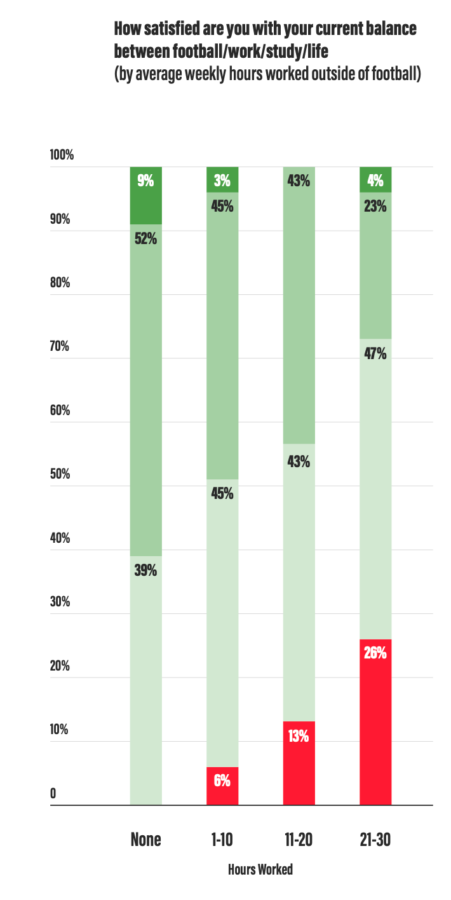Professional Footballers Australia (PFA) has today published the seventh annual A-League Women Report, detailing the continued growth of the competition in the year preceding the 2023 FIFA Women’s World Cup.
The report provides a comprehensive review of last season’s competition, including a league assessment, employment framework analysis, and player feedback, while also identifying some key opportunities for improvement to ensure the continued success of the league.
To read the full report click here.
This year’s report also contains a dedicated Women’s World Cup section analysing the A-League Women’s representation at the tournament and how this translates into a financial boost for women’s football in Australia.
PFA Co-Chief Executive Kate Gill said the report highlights how far the league has grown but also how far it still must go.
“This season featured the most teams, longest season, and highest investment in players in the league’s history,” Gill said.
“But while this is great progress, the report also highlights that players are feeling the strain of increasing football demands in a context where their careers are not yet full-time.
“Full-time professional contracting with commensurate renumeration is the next logical step, as it would not just benefit players but also improve the standard of the league and ensure that women’s football can seize the post-World Cup momentum and go to the next level in Australia.”
Some of the key findings of the report are:
Highest Investment in Players
Under the 2021-2026 A-Leagues Collective Bargaining Agreement, players are experiencing higher quality careers in terms of both remuneration and contract stability.
Total payments to players reached a record high this season. The 11 clubs collectively paid players $5.4m, up from last season’s previous high of $3.98m across ten clubs. This season’s average per club was $491k, up from $398k in 2021-22.

World Cup to Boost Women’s Football
FIFA’s Women’s World Cup Club Solidarity Fund compensates clubs that have helped prepare the players to perform at the tournament.
Following this year’s tournament, at which 17 A-League Women players competed, A-League Women clubs will collectively receive hundreds of thousands of dollars, in a significant boost to the domestic women’s football economy.
The report highlights the opportunity for ALW clubs to attract and develop the next generation of World Cup players to tap into this growing source of revenue.

ALW Match Minutes still lag other nations
Borrowing analysis from FIFPRO, the report shows that the 2022-23 ALW season provided less game time than most domestic leagues of other nations at the Women’s World Cup. Only four of the 27 leagues analysed guaranteed their teams fewer matches (not including finals).
The extension of the 2023-24 season to a 22-round, full home-and-away schedule is a welcome development considering this assessment.
Players struggling to find balance
The report’s player survey revealed that 60% of ALW players were working a job outside of playing, which obviously remains a financial necessity when most players were sitting at or 63% just above the minimum salary of $20,608 for a 29-week contract.
This conflict is not new, but for the past two seasons, for the first time, the survey found that more than half of ALW players were either not at all satisfied or only slightly satisfied with their football-life balance. Unsurprisingly, satisfaction scores declined in perfect correlation with the number of hours worked outside of football.

Room for improvement in treatment of women’s teams
The PFA’s player survey found that 72% of players agreed that there is unequal treatment based on gender at their club. Less than a third of ALW players (31%) agreed that both the women’s and men’s team at their A-League club were well integrated.
More encouragingly, two thirds of players (65%) agreed that the women’s team is a valued part of their club.

To read the full report click here.







